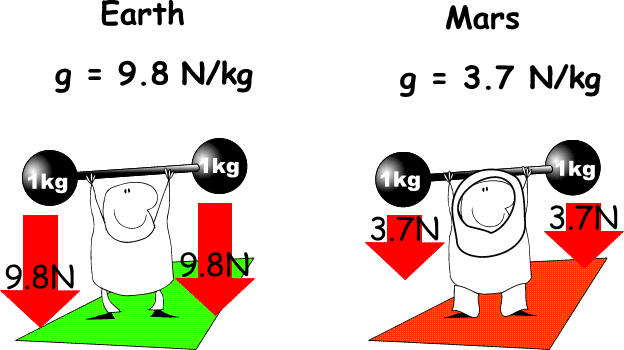Gravity

Gravity is the force you feel on a daily basis. It's what keeps us from floating off into space and it's what planes have to fight in order for them to stay in the air. The force of gravity is acting on you and everything else on Earth at all times at a constant acceleration of 9.8m/s^2. In fact, all planets have a gravitational force, some bigger than others, that act on the things on their surface.
The way we find out gravitational force is by Newton's Third Law for gravity which is F = √ (G x M / R^2) where G is the gravitational constant (6.67x10^-11 N (m/kg)^2), M is the mass of the Earth (5.972x10^24 kg), and R is the radius of the Earth (6.37x10^6 m). This equation is used to find the force of gravity on all planets.
When you throw a ball up, it's velocity it changing both when it goes up and comes back down, because the ball is experiencing the force of gravity. Even at it's highest point  where it briefly has a velocity of zero, the force of gravity still acts on it. The ball is following Newton's Second Law which F = M x A, where M is the mass of the object and A is the acceleration. Since gravity is an acceleration, this equation can be rewritten as F = M x g, where a = g and g = -9.8m/s^2.
where it briefly has a velocity of zero, the force of gravity still acts on it. The ball is following Newton's Second Law which F = M x A, where M is the mass of the object and A is the acceleration. Since gravity is an acceleration, this equation can be rewritten as F = M x g, where a = g and g = -9.8m/s^2.
Now think of a plane where the mass is quite large, there has to be a large of enough force to overcome gravity and then enough force to maintain flight (this force being Lift). When a plane is in flight, it experiences four forces at all times. This will be discussed more in detail in the Forces tab!
Planets with different gravity constants (rounded off)
| Planet | Mass(kg) | Radius(m) | Accel. of Gravity |
|---|---|---|---|
Table taken out of Randall D. Knight
Images from:
http://onlinephys.com/weightfrictions_files/gravity.gif
http://www.kentshillphysics.net/s/cc_images/cache_145147504.png?t=1347727011